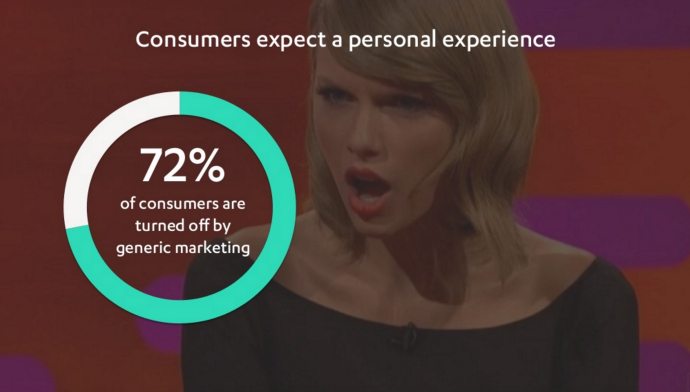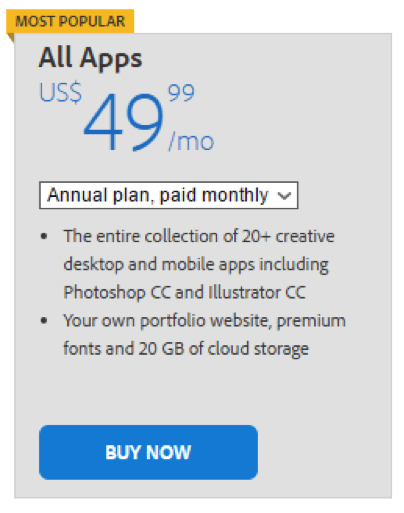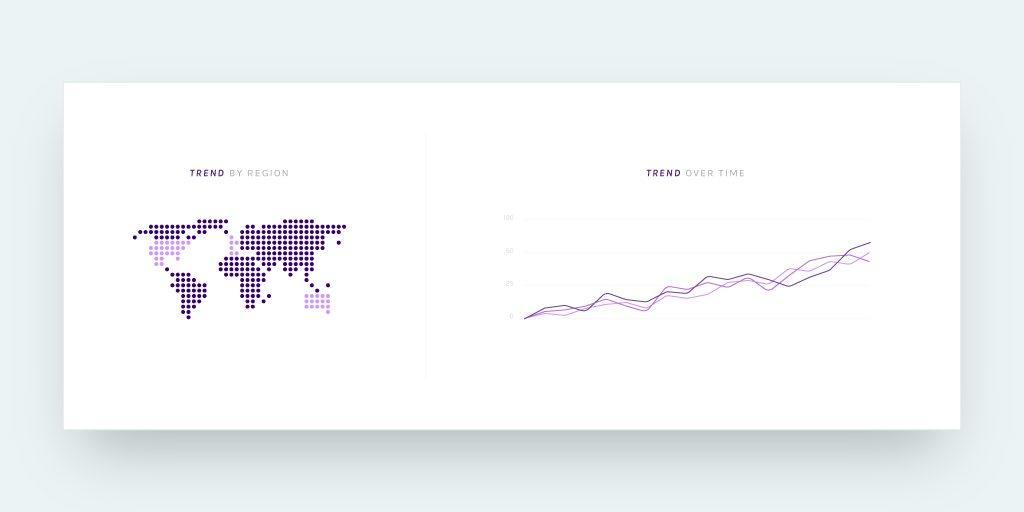August 25, 2016
Net Promoter Score (NPS)
A few weeks ago, we covered the basics of the Net Promoter Score® method—including how it can be leveraged to grow your business. We also learned that to boost customer retention, you must outperform your competitors. This week, we’re going to explore three trends that helped the Net Promoter Score® method become the single most popular customer feedback mechanism available. Here’s the thing: Net Promoter Score® surveys have been in use since 2003. So why are they suddenly so popular? Three trends have helped the Net Promoter® method gain momentum:
- The rise in customer expectations
- The explosion of subscription-based businesses
- The shift to constant connectivity
Understanding these trends will help you design better experiences for your customers—which is a must if you want to boost your Net Promoter Score®. Let’s review each trend in depth:
1. The rise in customer expectations
Since the NPS method was introduced in 2003, customer expectations have skyrocketed. As a result, 89% of companies now expect to compete primarily on customer experience (according to Gartner). Four factors have contributed to this trend: 1. We witness technological advancement every day. Whether you listen to the news or read about it online, you’re sure to hear about new and improved technologies at least once a day. In this context, it can be disappointing to realize that the product you own or the service you pay for is outdated. 2. We know 24⁄7 customer service is possible. In combination with social media, mobile technologies have strengthened our ability to connect 1-1 with brands at any time, from anywhere. In this context, we’ve grown impatient. Customers know that push notifications are capable of alerting businesses that they’ve asked a question. That’s why you risk alienating a satisfied customer every time you fail to respond. 3. We’ve become a self-service generation. There’s an avalanche of content available online. In this context, people no longer have to rely on sales or support representatives for the information they need. Anyone with an internet connection can open their computer, enter a question into a search engine, and instantly find what they’re looking for. That’s why it’s so frustrating when you can’t find an answer to your question and are forced to contact customer support. 4. We’re accustomed to being able to personalize everything. As digital natives, Millennials—who will make up 1 in 3 adults by 2020—were always able to tweak technologies to suit their needs. And they’re not alone: Other generations have been quick to adapt. As a result, consumers now refuse to settle for cookie-cutter products and services.  Think about it: Why would someone opt into receiving salesy batch-and-blast emails when they could receive personalized and contextual communications that deliver real value? Your customers know what an exceptional customer experience looks like. If you settle for anything less, they’ll assume you’ve prioritized your profits over their satisfaction—and take their business elsewhere.
Think about it: Why would someone opt into receiving salesy batch-and-blast emails when they could receive personalized and contextual communications that deliver real value? Your customers know what an exceptional customer experience looks like. If you settle for anything less, they’ll assume you’ve prioritized your profits over their satisfaction—and take their business elsewhere.
2. The explosion of subscription-based businesses
You’ve probably subscribed to a magazine at some point in your life. Or paid monthly for a gym membership. The truth is, subscription-based businesses have been around for years. But since the NPS method was introduced in 2003, this business model has exploded. Software is now sold as a monthly service. But so are media streaming services, wine, toothbrushes, razor blades, cheese, and even children’s toys.  I remember back in 2010, when it cost $1,299 to buy Adobe Creative Suite Design Standard. At that price, it was out of reach for most people. Now you can access all the apps through Adobe Creative Cloud for as low as $49.99/month. The subscription-based business model is democratic, which is great news for customers. It empowers them to vote with their money. But for brands, this model comes with significant risk: Because customers pay monthly for access to products and services, they can end their subscription at any time (e.g. after they have a bad experience). In this context, brands must keep their customers happy if they wish to survive, let alone thrive.
I remember back in 2010, when it cost $1,299 to buy Adobe Creative Suite Design Standard. At that price, it was out of reach for most people. Now you can access all the apps through Adobe Creative Cloud for as low as $49.99/month. The subscription-based business model is democratic, which is great news for customers. It empowers them to vote with their money. But for brands, this model comes with significant risk: Because customers pay monthly for access to products and services, they can end their subscription at any time (e.g. after they have a bad experience). In this context, brands must keep their customers happy if they wish to survive, let alone thrive.
3. The shift to constant connectivity
In the past, word of mouth could only be spread via personal interactions—limiting the effects of both positive and negative word of mouth. But in 2016, we’re always connected: We carry phones, tablets, and other connected devices with us everywhere we go. We engage with our networks via SMS, social media, email, and instant messaging. And WiFi is always within reach, regardless of whether we’re in the the city or laying on the beach. This trend has a big impact on brands. Consider this: In the digital age, a single tweet can instantly reach customers all over the world—a lot of customers, especially if that tweet goes viral. In fact, angry customers have proven that they’re even willing to pay to share their frustrations with others.  Tweets like this one don’t just disappear. Online, they live forever. That means a single negative tweet can leave a permanent scar on your brand. In truth, tweets are just one method of broadcasting dissatisfaction. Customers can also post their experiences to Facebook, Google+, online review sites, etc. In this new context, transforming your detractors into promoters is imperative for brand survival.
Tweets like this one don’t just disappear. Online, they live forever. That means a single negative tweet can leave a permanent scar on your brand. In truth, tweets are just one method of broadcasting dissatisfaction. Customers can also post their experiences to Facebook, Google+, online review sites, etc. In this new context, transforming your detractors into promoters is imperative for brand survival.
Customers are in control
These three trends have helped shift the locus of control from brands to customers. In this context, brands can no longer afford to prioritize their own messaging over their customers’ needs. To become truly customer-centric organizations, brands must regularly measure customer satisfaction. Because the Net Promoter® method is both simple (i.e. appealing to customers) and effective (i.e. accurate), it appeals to both customers and brands—causing it to become one of the most popular customer feedback mechanisms available.
Key Takeaways:
- The rise in customer expectations makes delivering an exceptional customer experience way harder
- Subscription-based business models make it way easier for customers to defect to your competitors
- Constant connectivity makes it effortless for customers to spread negative word-of-mouth about your brand after a poor experience
- Because control has shifted from brands to customers, brands must regularly measure customer satisfaction if they wish to survive
- The Net Promoter® method is simple yet effective, which makes it appealing to both customers and brands
How have these trends impacted your business? Share your experiences in the comments.













